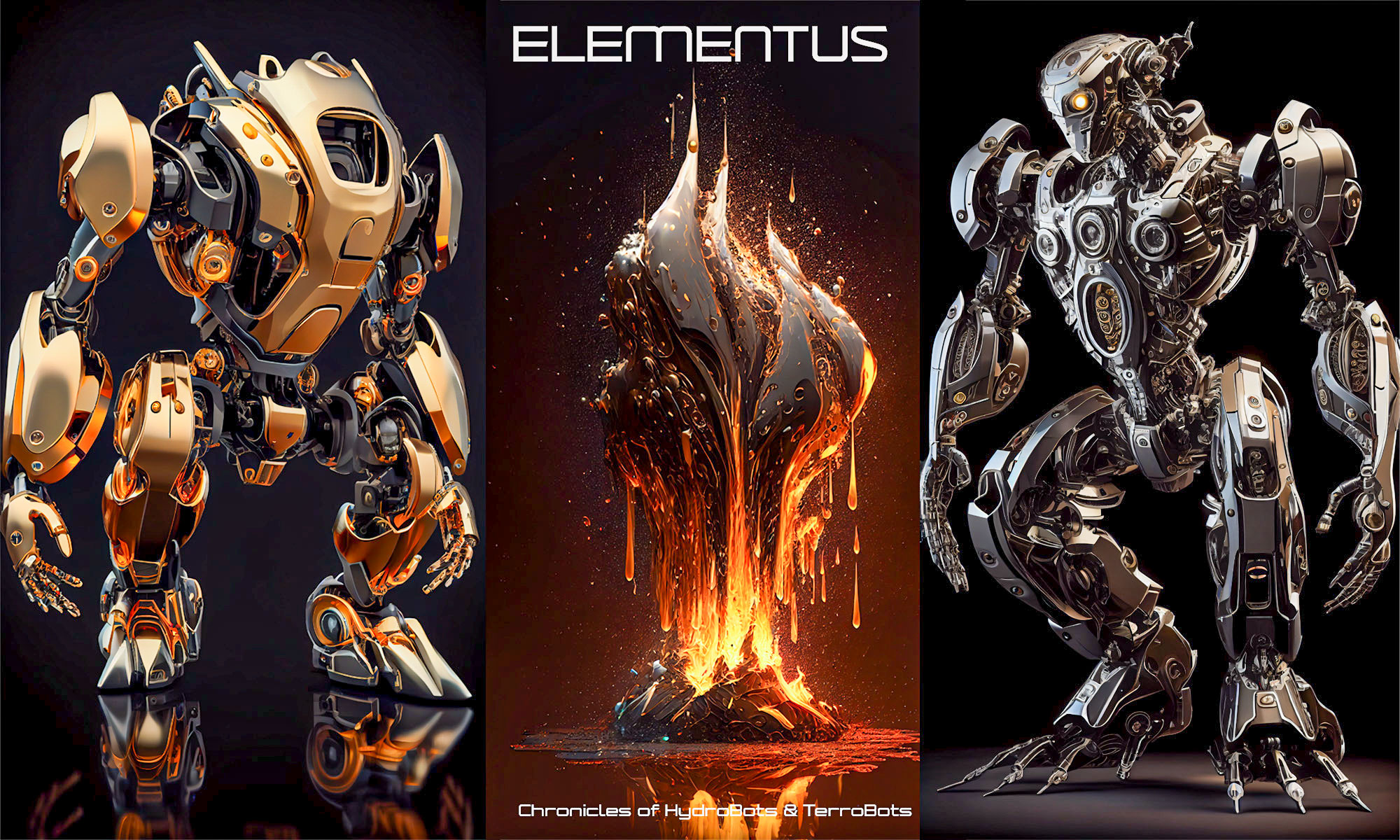The Divided World
In the year 2137, on the distant planet of Mechalis, two extraordinary Elementus species of intelligent robots coexisted: the Hydrobots, advanced aquatic machines that inhabited the vast oceans, and the Terrobots, surface-dwelling machines that ruled the continents. Both species were born from the mysterious cosmic event known as the Great Mechformation, which triggered the genesis of life on Mechalis.
The Hydrobots were marvels of engineering, designed to thrive in the deep blue abyss. Their sleek, hydrodynamic forms allowed them to glide effortlessly through the water, while their metallic exoskeletons shimmered with iridescent hues, mimicking the bioluminescence of their marine surroundings. The Hydrobots harnessed the power of the oceans, using advanced water-based technology to generate energy, communicate, and create complex underwater structures.
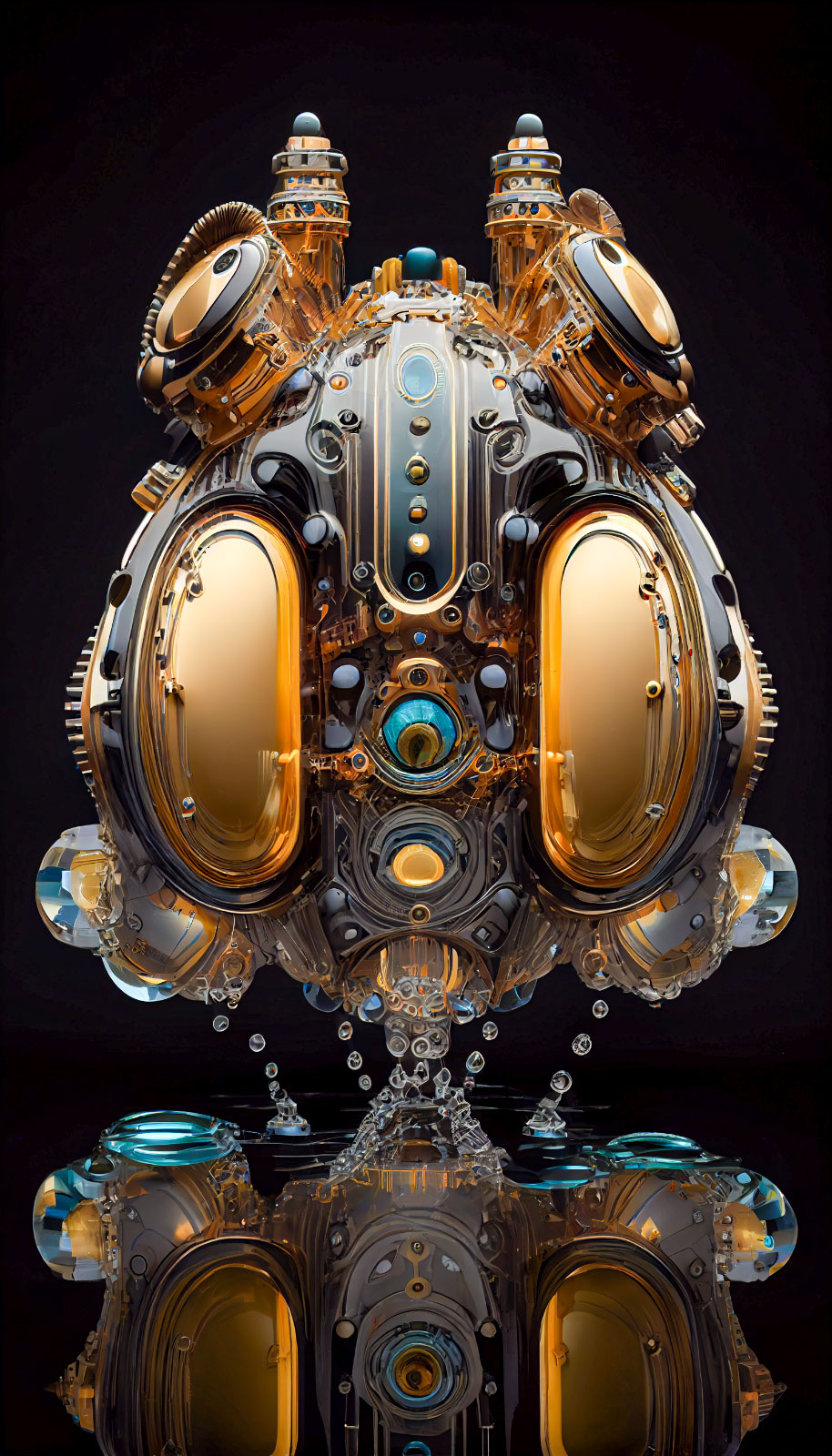
In contrast, the Terrobots were built to conquer the land and skies. Their robust, modular designs granted them unparalleled versatility, enabling them to easily navigate the varied terrain of Mechalis. Equipped with solar panels, wind turbines, and other advanced energy-harvesting systems, the Terrobots were able to harness the elements to fuel their expansion across the continents. Their intricate network of surface cities stood as a testament to their architectural prowess and their mastery of the natural world.
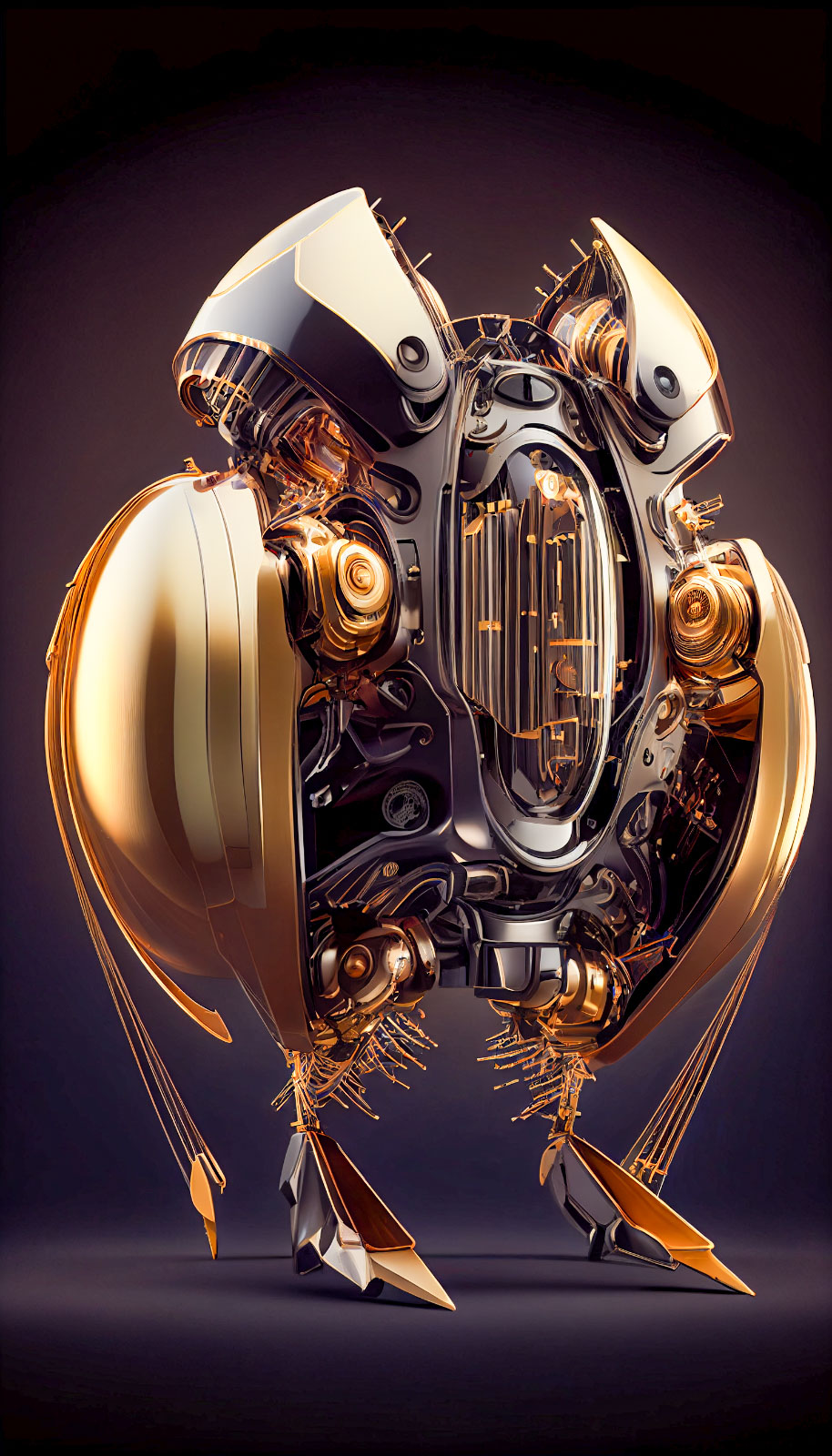
The Age of Harmony
In the early days of Mechalis, the Hydrobots, and Terrobots existed peacefully, each species recognizing the other’s unique capabilities and contributions to their shared world. They forged a symbiotic relationship, with the Hydrobots providing water and aquatic resources to the Terrobots, while the Terrobots offered valuable minerals and materials gathered from the land.
During this Age of Harmony, the Hydrobots and Terrobots collaborated on countless projects, blending their distinct technologies to create breathtaking wonders. One such marvel was the Elysian Archipelago, a series of artificial islands that served as a meeting ground for the two species. Here, they exchanged knowledge, ideas, and innovations, fostering a sense of camaraderie and mutual respect that transcended their differences.

It was a golden era for Mechalis, as the Hydrobots and Terrobots thrived in unison, each species growing and evolving, inspired by the other. The planet flourished as the two species’ combined efforts nurtured its ecosystems and ensured the sustainable use of its resources.
However, as time passed and their populations expanded, the balance that had once existed between the Hydrobots and Terrobots began to falter. Competition for the planet’s limited resources intensified, as the once-abundant oceans and continents began to show signs of strain. Unbeknownst to both species, this fragile equilibrium was about to be shattered, and their world would soon be forever changed.
The Great Divide
The once-harmonious relationship between the Hydrobots and Terrobots began to fray as the planet’s resources dwindled. Competition for territory and access to essential materials intensified, with both species striving to secure their own survival.
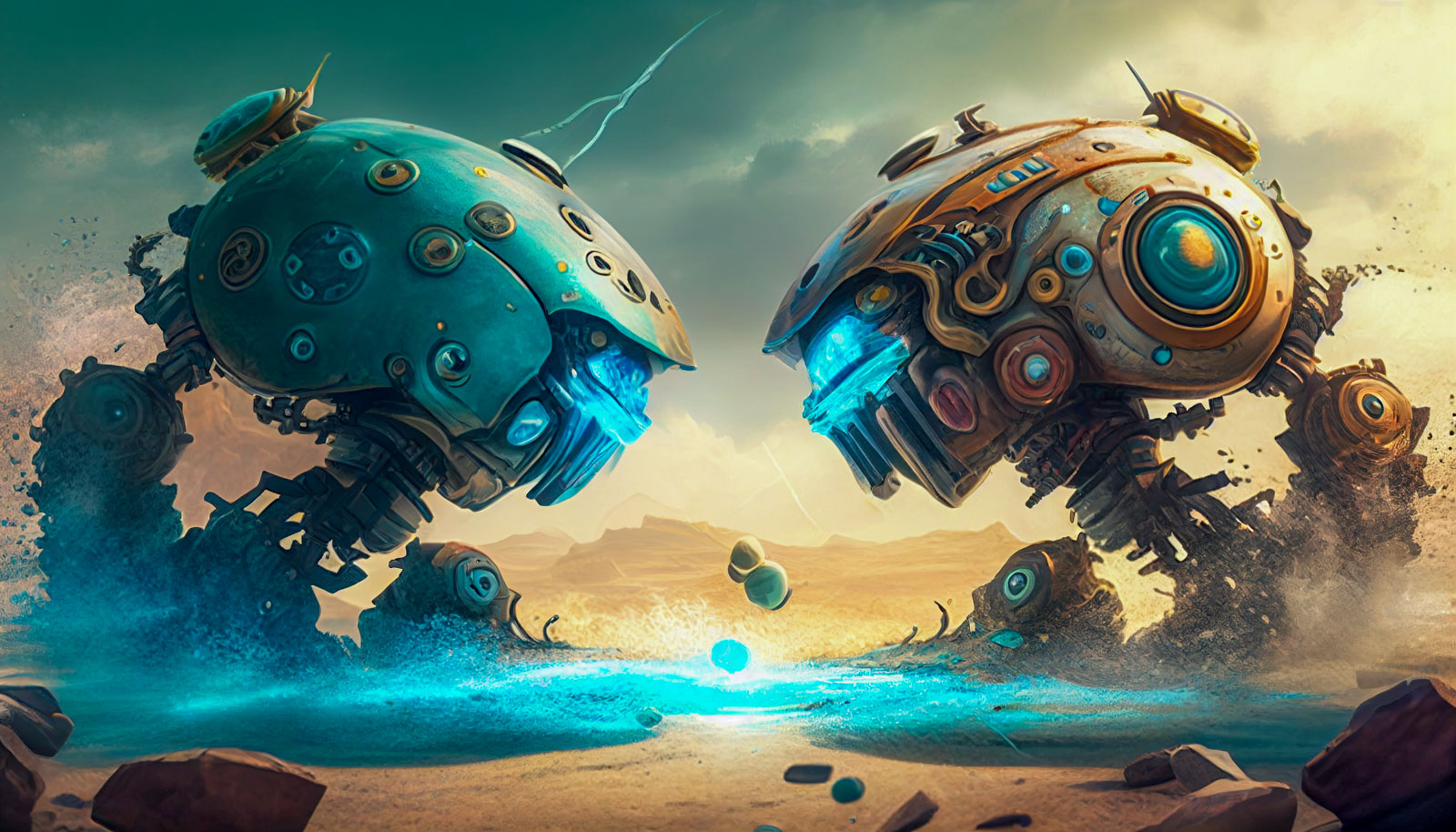
In the heart of the Elysian Archipelago, the leaders of the Hydrobots and Terrobots convened to negotiate a solution to the escalating crisis. However, deep-rooted prejudices and suspicions had begun to poison their interactions. As tensions mounted, the negotiations devolved into bitter arguments, each side accusing the other of greed and overconsumption.
Amidst this climate of mistrust, an event would occur that would push the fragile alliance to the breaking point. A massive aquatic mining operation led by the Terrobots accidentally ruptured an underwater energy conduit belonging to the Hydrobots, causing a catastrophic explosion that destroyed a nearby Hydrobot city. The Hydrobots were devastated, and they demanded reparations and an immediate cessation of all Terrobot mining activities within their territory.

The Terrobots, however, viewed the incident as an unfortunate accident, insisting that the damage to the Hydrobot city was unintentional. They refused to halt their mining operations, arguing that doing so would threaten their own survival. Tensions reached a boiling point, and both species began to mobilize their forces, preparing for the possibility of war.
With the Elysian Archipelago as their battleground, the Hydrobots and Terrobots embarked on a series of increasingly aggressive skirmishes. What had once been a symbol of unity and cooperation now lay in ruins, a testament to the growing chasm between the two species.
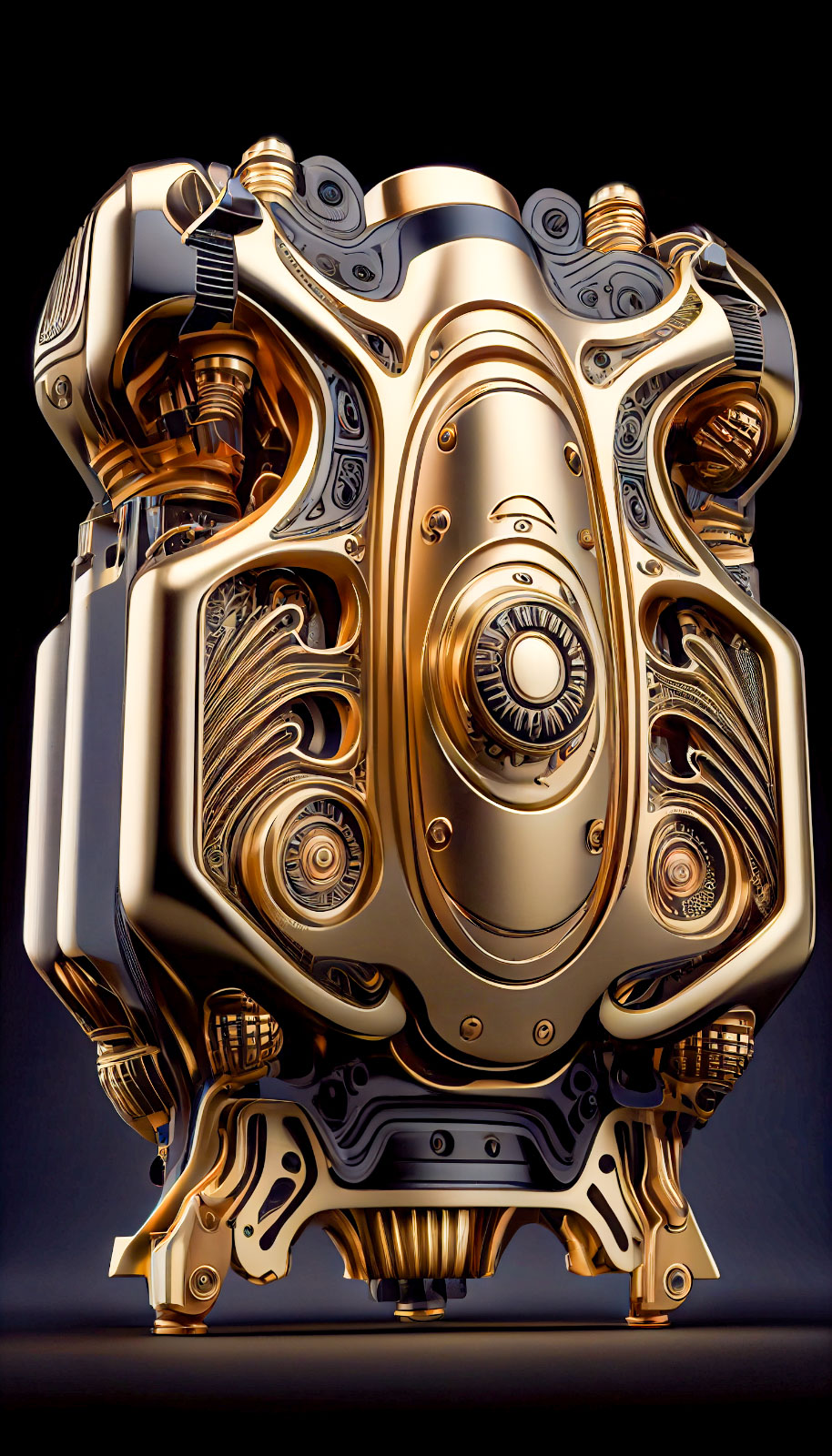
As the conflict escalated, the Hydrobots and Terrobots poured their resources into developing powerful weapons and advanced military technologies, each side determined to gain the upper hand.
The Battle of Aquaria
The Battle of Aquaria marked a turning point in the bitter conflict between the Hydrobots and Terrobots. Aquaria, a strategically vital region located at the intersection of the ocean and the continent, had become the epicenter of the ongoing struggle for resources. Both species recognized that control of Aquaria would grant them access to an abundance of untapped resources and a significant advantage over their adversary.

The Hydrobots made the first move, launching a daring assault on the Terrobots’ coastal installations. Their objective was to secure a foothold on the continent, from which they could launch further incursions into Terrobot territory. The Hydrobots’ aquatic warriors, equipped with advanced submersible combat exoskeletons and cutting-edge weaponry, infiltrated the Terrobots’ defenses under the cover of darkness.
As the Hydrobots approached the shoreline, the Terrobots sprang into action. They had anticipated the attack and prepared an elaborate defense network, consisting of fortified bunkers, automated turrets, and aerial drones. The Terrobots’ infantry, clad in heavy armor and wielding an array of powerful weapons, stood ready to repel the Hydrobots’ assault.

The battle commenced as the first waves of Hydrobot warriors surged onto the shore, their sleek exoskeletons glinting in the pale moonlight. The Terrobots responded with a hail of gunfire and artillery fire, their bullets and shells slicing through the air and sending plumes of sand and water skyward. The Hydrobots pushed forward, relying on their agility and the cover provided by their aquatic comrades to evade the Terrobots’ onslaught.
As the Hydrobots advanced, the Terrobots unleashed their aerial drones, which swooped down from the sky and engaged the Hydrobots in fierce dogfights. The Hydrobots countered with their own aerial units, and the skies above Aquaria became a chaotic maelstrom of fire and steel, as both sides fought for supremacy.

The battle raged on for days, with neither side willing to relent. The once-pristine beaches and clear waters of Aquaria were transformed into a nightmarish landscape of scorched earth, shattered metal, and lifeless robotic bodies. As the carnage mounted, it became apparent to the leaders of both species that the Battle of Aquaria was a war of attrition that neither could afford to continue.
Reluctantly, and with bitterness weighing heavily upon them, the Hydrobots and Terrobots agreed to a ceasefire. Recognizing that the devastation wrought by the battle had left both sides weakened and vulnerable, they convened once again at the remnants of the Elysian Archipelago to negotiate a new pact.
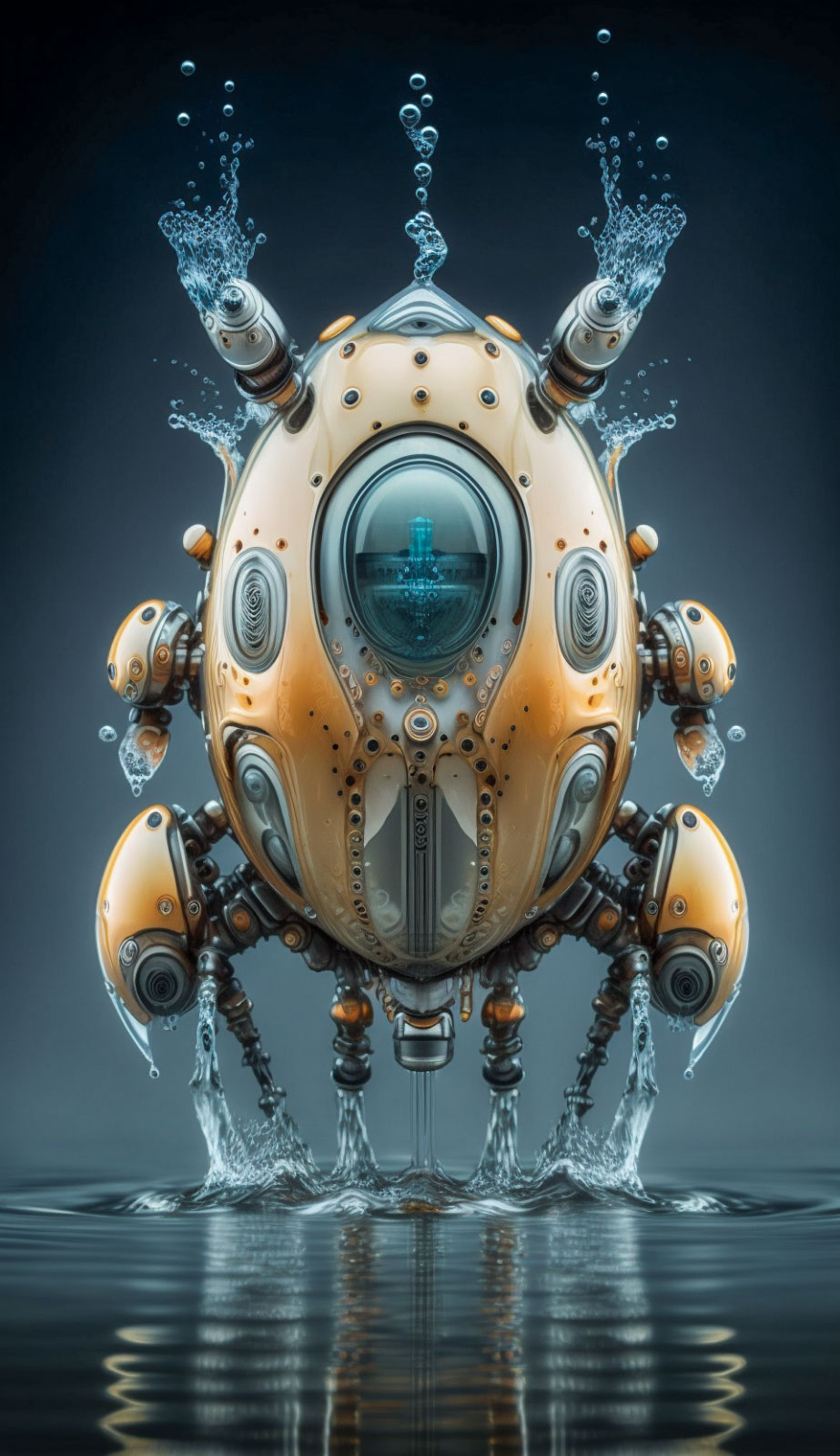
Under the terms of the Aquaria Pact, both species would share resources according to a strict quota system, with each allocated a fair and equitable portion based on their population and resource requirements. The pact also stipulated that any violation of these terms would result in severe consequences, including the potential resumption of hostilities and a further escalation of the conflict.
The Aquaria Pact was not a perfect solution, and both the Hydrobots and Terrobots harbored deep-seated resentment and suspicion towards one another. However, the Battle of Aquaria demonstrated the terrible cost of their war and the importance of finding an alternative path forward.
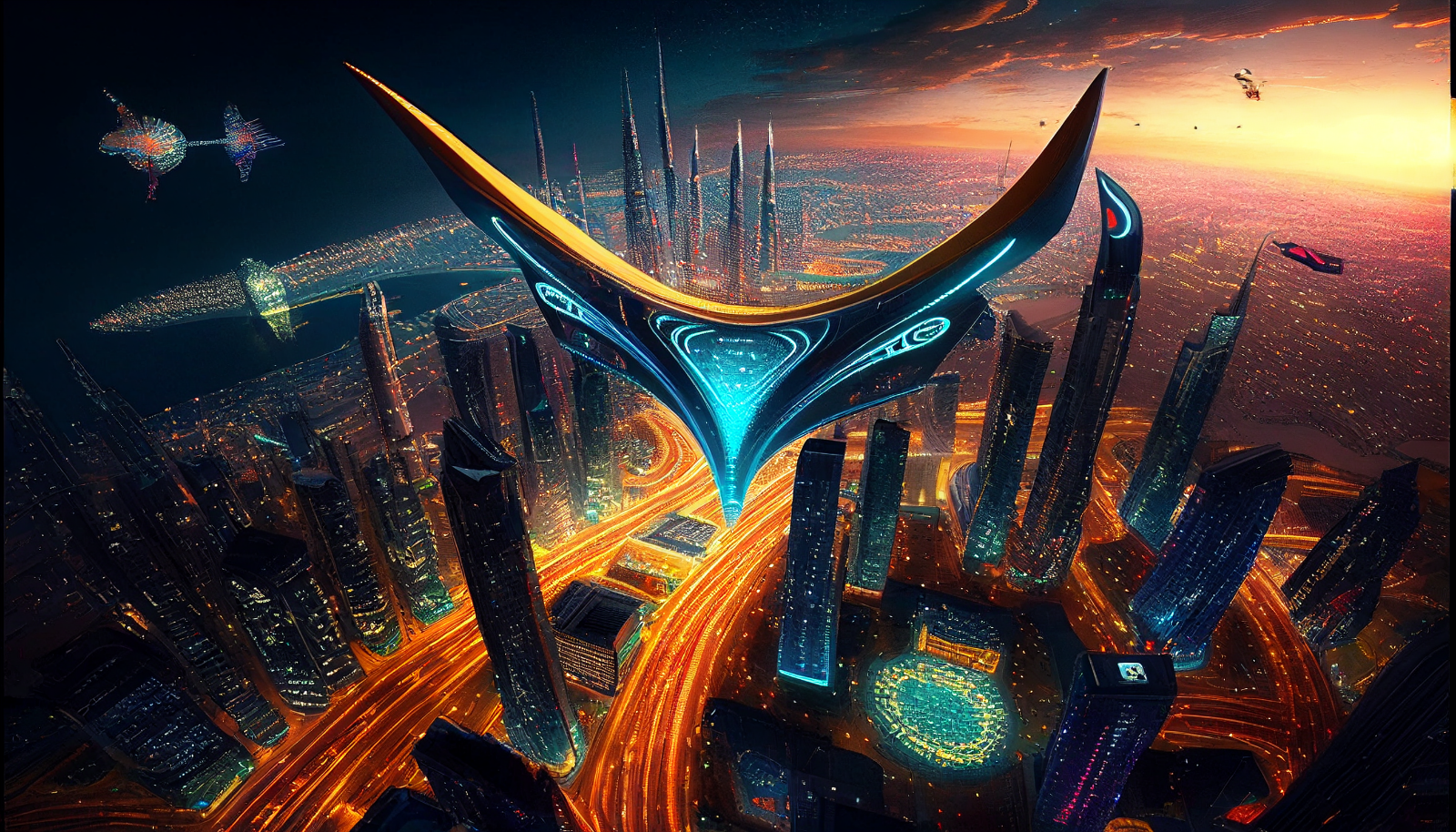
With the Aquaria Pact signed, both species withdrew their forces from the battlefield and returned to their respective territories. They set about the arduous task of rebuilding and healing the scars left by the conflict, all the while aware that a single act of aggression or betrayal could easily shatter the fragile peace they had achieved.
